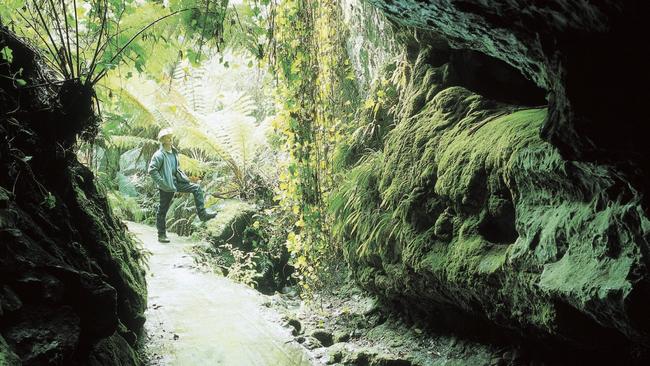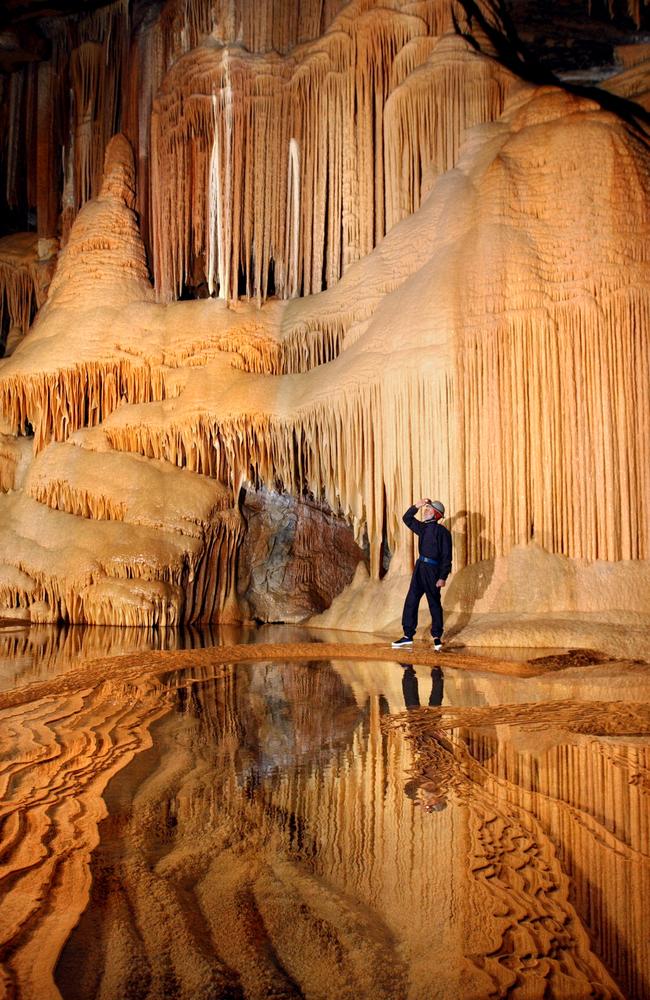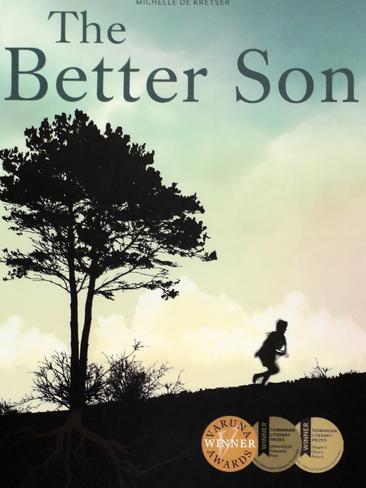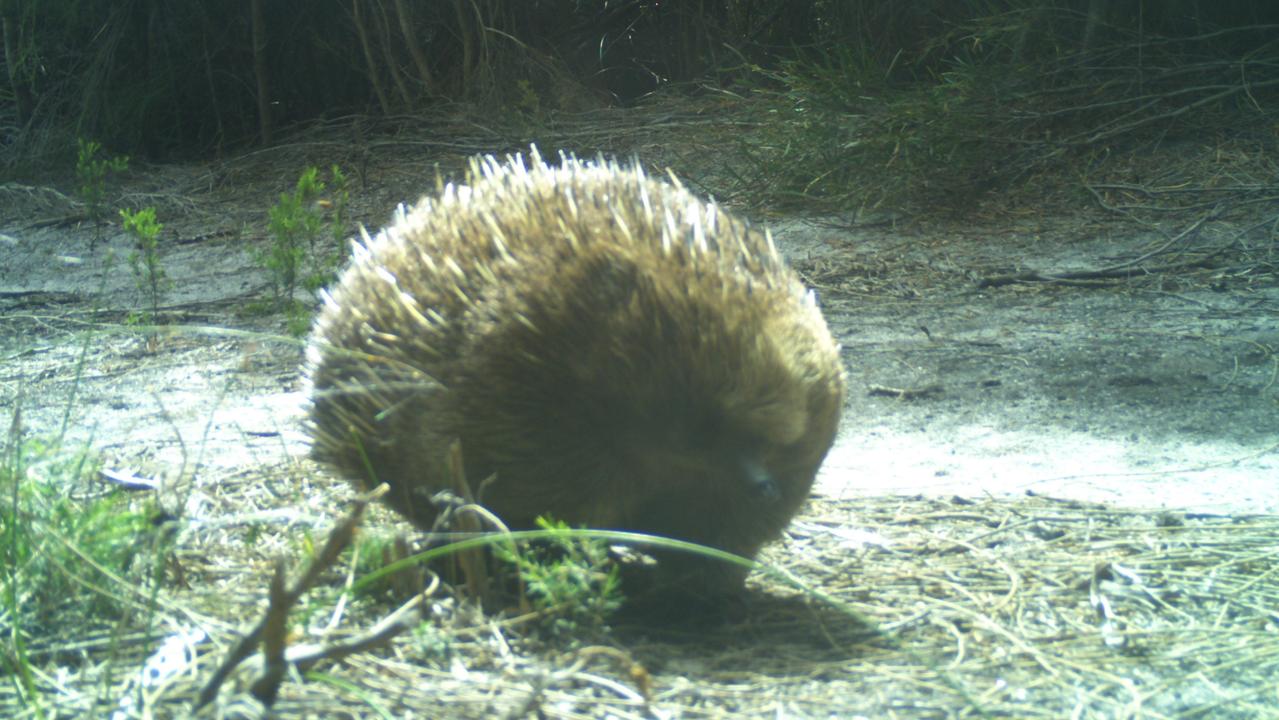TasWeekend: Inspiration from a secret source
WHEN novelist Katherine Johnson heard about the two young boys who discovered Marakoopa cave 100 years ago, she knew she’d found inspiration for her next book.

IT took a thrilling news story about illegal fishing and a chase on the high seas to turn science journalist Katherine Johnson into a novelist. And a family visit to a Tasmanian tourist spot sparked her second novel. Having studied a combined science and arts degree at university, Johnson, 45, says she always had a love of writing and a scientific mind, which turned out to be an ideal combination for writing scientific journal articles for institutions such as CSIRO.
Originally from Brisbane, she moved to Tasmania 18 years ago when her husband Craig – a Tasmanian-born marine ecologist – got a job at the University of Tasmania in Hobart.
Johnson transferred to the CSIRO in Hobart to continue her journalistic work as well, but in 2003 she was captivated by a news story about a Uruguayan fishing vessel caught poaching Patagonian toothfish in Australia’s Antarctic fishing zone.

An Australian customs and fisheries vessel gave chase, the 20-day pursuit taking the two boats from near Macquarie Island almost to South Africa, through foul weather and treacherous ice floes.
“I was just so immersed in the story as it unfolded – it had everything, this thrilling chase across the ocean,” she says. “And more than that, I knew there must be a great human story behind it as well, the crews of both boats, their fears, their families at home and so on.”
Johnson’s fictionalised version of the sea chase became her debut novel, Pescador’s Wake, in 2009. The manuscript won a HarperCollins Varuna Award in 2007, allowing her to spend 10 days honing the story one-on-one with a professional editor, which she found invaluable.
“That story grew organically, I think,” Johnson says. “I just started from chapter one with that core idea and let it grow from there.
“I do have a sense of where the story is going when I write but I don’t feel locked into that plan of where it needs to go. I kind of enjoy the journey myself, finding out where it’s going as it happens.
“And I find that the process of writing opens up ideas that you can’t see in the planning stages. It’s like a puzzle and once you see the pieces in place, other pieces start falling into place as well and give you new ideas.”
Johnson has just published her second novel, The Better Son, a story that, while vastly different from her first, she says bears many similarities. Set at Mole Creek, in northern Tasmania, in 1952, it is the tale of two brothers who find a hidden cave not far from their family home. Rather than telling anyone about their discovery, they keep the cave a secret, using it as an escape from their abusive father, until the eldest brother goes missing. Fifty years later, the surviving brother is a scientist with a son of his own, but is still haunted by the death of his brother.
“We were up at Mole Creek as a family and visited the caves, as you do,” she says. “That was when I heard the story about the two young boys who first found Marakoopa cave 100 years ago. The Byard brothers kept it secret for years before telling anybody about it.
“It struck me, as soon as I was back in the car, why would they keep it a secret? What would drive them to explore that cave for themselves and not tell anybody about it? And what would happen if something happened to one of them in that cave, when they weren’t meant to be in there?
“It was one question following the other, and as soon as I started thinking about these two young boys in that vast landscape, it gave me goosebumps. I knew I had to explore that story.”
For both novels, it was Johnson’s inquiring mind that drew her attention to unexpected sources of inspiration, but it was her love of human stories that made the ideas grow.
“The common thread linking them is that they’re human stories, about human relationships. They both touch on landscape, and there’s often a bit of science in there as well,” she says. “I don’t think they are that different, really. At their core they are stories about family, and love and loss, and resilience, and people pitched against the elements, and difficult environments, and circumstances.
“It’s not an intentional thing, but I think the Tasmanian landscape drives a lot of that. The first novel was ‘deep sea’ and this one is ‘deep earth’, I suppose, in limestone country.”

Johnson hesitatingly refers to her genre as “literary fiction”, but clearly dislikes the idea of being pigeon-holed.
“I try to have a strong narrative drive in the stories, tension and drama,” she says. “If it’s literary fiction, I suppose it is accessible literary fiction. I am drawn to some excitement, I like there to be a narrative. Characterisation is very important but I do like a strong story element as well. Someone called The Better Son a literary thriller, which I found interesting because I never really saw myself as a thriller writer. But I do like to play with suspense and there is certainly some adventure in this story.”
The manuscript for The Better Son, under the working title Kubla, earned Johnson two prizes in the Tasmanian Literary Awards: the University of Tasmania Prize for an unpublished manuscript by an emerging writer and the People’s Choice Award. It also received a HarperCollins Varuna Award in 2013 and was supported by funding from Arts Tasmania.
The story of Marakoopa cave might have inspired the book but, when describing the caves in the story, Johnson was more inspired by the Mole Creek region’s famous Kubla Khan cave, with its enormous caverns and monolithic limestone formations – hence the working title.
“I never entered Kubla Khan,” she says with a hint of regret. “It is a very technical caving trip, for those with much experience. In a sense, Kubla Khan is a cave you have to earn your stripes for – you can’t just turn up with no experience and do that cave.
“But I did join a caving group and went with them into the Genghis Khan cave, which is sort of the sister cave of Kubla Khan. We went to the entrance of Kubla Khan and looked in, and it is quite long and intimidating.
“I also went through Marakoopa after-hours, to see it without the tourists, turning the lights off to experience what it’s like in the dark and quiet. For the book, I wanted to experience what it would be like in there with no lights and no sound. I wanted to imagine being there on my own. It is darker than dark, you can’t see your hand in front of your face. All you can hear is the distant ‘drip drip’ of water dripping off the limestone on to the floor. Maybe you might see some glow worms.”
Since turning her attention to fiction writing, Johnson has taken a break from her science-writing work, and is working on her PhD in creative writing at UTAS, penning another novel as her main project.

“That novel is all I’m working on right now – it’s more than enough work,” she laughs. “That project is a colonial fiction, a bit different again from my other work. It was just another idea that inspired me. I think publishers prefer you to stay neatly in just one box but I tend to jump from one to the next.
“After this I have another book that I started some time ago and would like to revisit. I thought at the time it was too different from my first book to make a good second book, but I now think I can see what I need to do with that.”
Johnson does a bit of writing at uni but still does the bulk of her work from the clifftop home south of Hobart, looking out to sea, that she shares with her husband and two children.
“I usually do five solid hours each day,” she says. “It seems to be my most efficient way of working. I do think it is really only in the process of doing the writing that the ideas come and the problems resolve.
“I never planned to be a fiction writer but I do love it and definitely will continue doing this. For some reason I feel a need to write these stories. Once there’s an idea, I need to see it through. I really enjoy it.”
Johnson says the Tasmanian landscape continues to be a big source of inspiration in her stories and she has become quite an ambassador in the time she has lived in Tasmania.
“I just love Tassie, I’m a convert,” she says. “The rest of my family have moved down here now and we all live in the same street. It’s all very bizarre.”
The Better Son, by Katherine Johnson, is published by Ventura Press, $29.99, venturapress.com.au/the-better-son-katherine-johnson
Originally published as TasWeekend: Inspiration from a secret source



